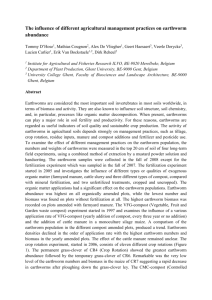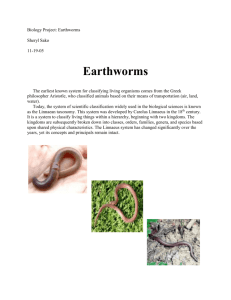Microsoft Word
advertisement
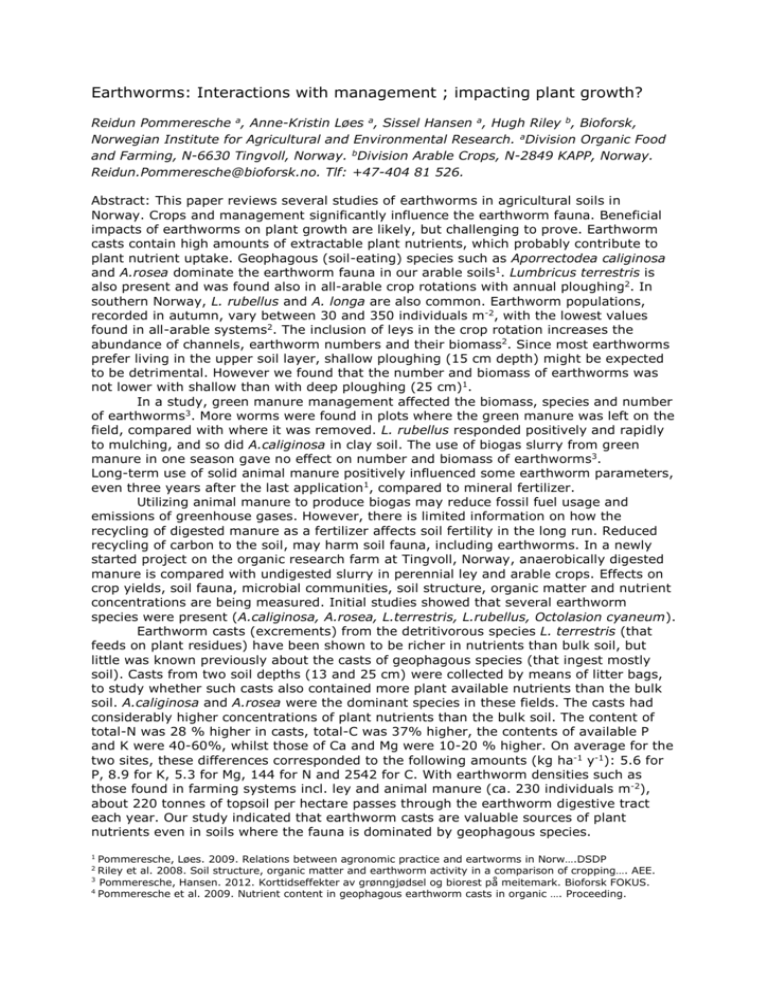
Earthworms: Interactions with management ; impacting plant growth? Reidun Pommeresche a, Anne-Kristin Løes a, Sissel Hansen a, Hugh Riley b, Bioforsk, Norwegian Institute for Agricultural and Environmental Research. aDivision Organic Food and Farming, N-6630 Tingvoll, Norway. bDivision Arable Crops, N-2849 KAPP, Norway. Reidun.Pommeresche@bioforsk.no. Tlf: +47-404 81 526. Abstract: This paper reviews several studies of earthworms in agricultural soils in Norway. Crops and management significantly influence the earthworm fauna. Beneficial impacts of earthworms on plant growth are likely, but challenging to prove. Earthworm casts contain high amounts of extractable plant nutrients, which probably contribute to plant nutrient uptake. Geophagous (soil-eating) species such as Aporrectodea caliginosa and A.rosea dominate the earthworm fauna in our arable soils1. Lumbricus terrestris is also present and was found also in all-arable crop rotations with annual ploughing2. In southern Norway, L. rubellus and A. longa are also common. Earthworm populations, recorded in autumn, vary between 30 and 350 individuals m-2, with the lowest values found in all-arable systems2. The inclusion of leys in the crop rotation increases the abundance of channels, earthworm numbers and their biomass2. Since most earthworms prefer living in the upper soil layer, shallow ploughing (15 cm depth) might be expected to be detrimental. However we found that the number and biomass of earthworms was not lower with shallow than with deep ploughing (25 cm)1. In a study, green manure management affected the biomass, species and number of earthworms3. More worms were found in plots where the green manure was left on the field, compared with where it was removed. L. rubellus responded positively and rapidly to mulching, and so did A.caliginosa in clay soil. The use of biogas slurry from green manure in one season gave no effect on number and biomass of earthworms3. Long-term use of solid animal manure positively influenced some earthworm parameters, even three years after the last application1, compared to mineral fertilizer. Utilizing animal manure to produce biogas may reduce fossil fuel usage and emissions of greenhouse gases. However, there is limited information on how the recycling of digested manure as a fertilizer affects soil fertility in the long run. Reduced recycling of carbon to the soil, may harm soil fauna, including earthworms. In a newly started project on the organic research farm at Tingvoll, Norway, anaerobically digested manure is compared with undigested slurry in perennial ley and arable crops. Effects on crop yields, soil fauna, microbial communities, soil structure, organic matter and nutrient concentrations are being measured. Initial studies showed that several earthworm species were present (A.caliginosa, A.rosea, L.terrestris, L.rubellus, Octolasion cyaneum). Earthworm casts (excrements) from the detritivorous species L. terrestris (that feeds on plant residues) have been shown to be richer in nutrients than bulk soil, but little was known previously about the casts of geophagous species (that ingest mostly soil). Casts from two soil depths (13 and 25 cm) were collected by means of litter bags, to study whether such casts also contained more plant available nutrients than the bulk soil. A.caliginosa and A.rosea were the dominant species in these fields. The casts had considerably higher concentrations of plant nutrients than the bulk soil. The content of total-N was 28 % higher in casts, total-C was 37% higher, the contents of available P and K were 40-60%, whilst those of Ca and Mg were 10-20 % higher. On average for the two sites, these differences corresponded to the following amounts (kg ha-1 y-1): 5.6 for P, 8.9 for K, 5.3 for Mg, 144 for N and 2542 for C. With earthworm densities such as those found in farming systems incl. ley and animal manure (ca. 230 individuals m-2), about 220 tonnes of topsoil per hectare passes through the earthworm digestive tract each year. Our study indicated that earthworm casts are valuable sources of plant nutrients even in soils where the fauna is dominated by geophagous species. Pommeresche, Løes. 2009. Relations between agronomic practice and eartworms in Norw….DSDP Riley et al. 2008. Soil structure, organic matter and earthworm activity in a comparison of cropping…. AEE. 3 Pommeresche, Hansen. 2012. Korttidseffekter av grønngjødsel og biorest på meitemark. Bioforsk FOKUS. 4 Pommeresche et al. 2009. Nutrient content in geophagous earthworm casts in organic …. Proceeding. 1 2


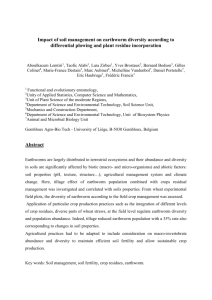
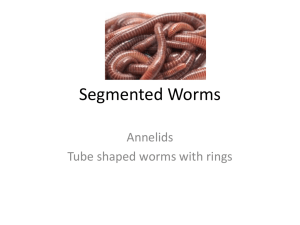
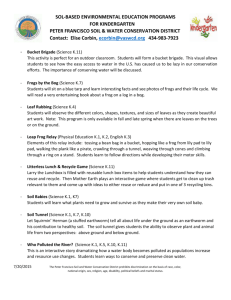
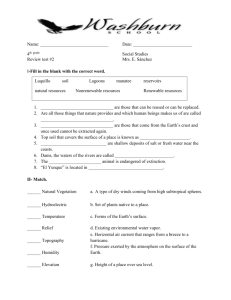
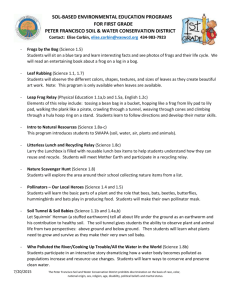
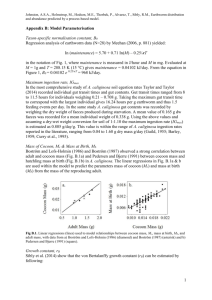

![Earthworm Lab [1/16/2014]](http://s3.studylib.net/store/data/007071636_1-f0a789e538fb90aecda95ecf7b0a3557-300x300.png)
